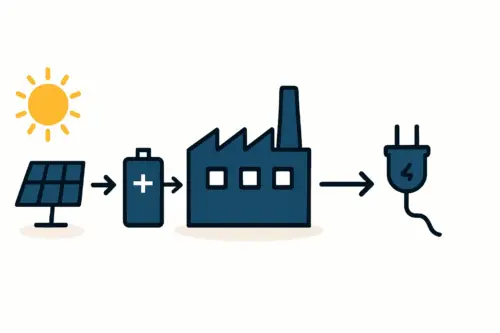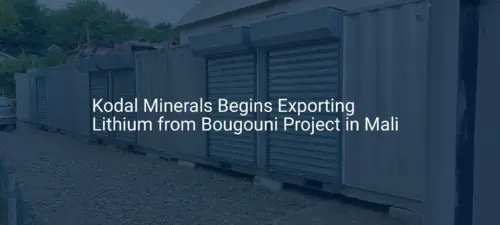An investor considering solar module production in Mali might assume that more sun automatically equals more power. While the region’s high solar irradiation presents a significant opportunity, it also poses a critical engineering challenge: extreme heat.
Standard solar modules, often designed for moderate European climates, can underperform and degrade rapidly in the demanding conditions of the Sahel, threatening the long-term viability of a solar project.
This guide explores the technical considerations for manufacturing solar panels specifically suited for high-temperature environments. It outlines why standard modules falter and examines the specialized materials and design principles that ensure durability and optimal performance, transforming a potential liability into a competitive advantage.
The Challenge of Extreme Heat on Standard Solar Modules
The performance of a solar module is universally rated under Standard Test Conditions (STC), which include a cell temperature of 25°C (77°F). In real-world applications, however, especially in arid regions, this temperature is quickly surpassed.
In Mali, for example, the annual average temperature is 28.25°C, with daytime temperatures regularly exceeding 45°C. Under direct sunlight, the surface of a solar module can reach operating temperatures between 65°C and 85°C. This intense heat has two primary negative effects: an immediate loss of power and accelerated long-term degradation.
Understanding Temperature Coefficient and Power Loss
Every solar module has a ‘temperature coefficient,’ a rating that specifies how much its power output decreases for every degree Celsius the cell temperature rises above the 25°C standard. Most standard crystalline silicon modules have a coefficient between -0.35%/°C and -0.45%/°C.
To understand the business implication of this physical property, consider this scenario:
Module Operating Temperature: 75°C
Standard Test Temperature: 25°C
Temperature Difference: 50°C
Assumed Temperature Coefficient: -0.40%/°C
Calculation: 50°C × -0.40%/°C = -20%
In this common scenario, the module produces 20% less power than its nameplate rating indicates—a loss caused purely by heat. For a large-scale solar installation, this immediate and consistent drop in output can severely impact financial projections and the overall return on investment.

Ready to make big Profits?
The solar Industry is Booming
WE HELP NEWCOMERS to the solar industry start their own solar module production line. Customers can make BIG PROFITS by selling modules and finding investors, without wasting money and time on things they don't need!
Beyond Power Loss: Long-Term Material Degradation
The impact of heat extends beyond temporary power reduction. Sustained high temperatures and intense UV radiation accelerate the aging of the polymers used in a solar module’s construction. The encapsulant (typically Ethylene Vinyl Acetate, or EVA) and the backsheet are the most vulnerable components.
Over time, this can lead to several critical failures:
- Yellowing: The EVA encapsulant can turn yellow, reducing the amount of light reaching the solar cells and further decreasing power output.
- Delamination: The bonds between the module’s layers can weaken, causing them to separate. This allows moisture and oxygen to penetrate, leading to corrosion and a high risk of electrical failure.
- Backsheet Cracking: The protective backsheet can become brittle and crack, compromising the module’s electrical insulation and creating a significant safety hazard.
These forms of degradation permanently damage the module, shorten its effective service life, and can void warranties. An investment expected to perform for 25 years might begin to fail in under a decade.
Engineering Solutions for Hot and Arid Climates
To succeed in markets like the Sahel, a solar module must be designed and manufactured specifically for the local environment. This requires a different approach to material selection and the overall solar panel manufacturing process.
Specialized Materials: The First Line of Defense
A durable high-temperature module begins with the selection of robust components.
- High-Resistance Encapsulants: Instead of standard EVA, manufacturers can use chemically modified EVA with higher UV and thermal resistance to prevent yellowing and maintain adhesion.
- Advanced Backsheets: Multi-layered backsheets made from highly stable polymers (such as PVDF or PET) provide a superior barrier against moisture ingress and UV degradation, preventing cracking and preserving electrical insulation.

A Case Study in Specialized Design: The DESERT+ Module
Based on decades of experience in global markets, engineering firms like J.v.G. have developed comprehensive design specifications to address these challenges. The DESERT+ technology is a prime example, combining several key adaptations into a single, cohesive design.
This integrated approach typically includes:
- Climate-Specific Materials: Using proven high-resistance encapsulants and multi-layer backsheets.
- Optimized Cell Technology: Selecting solar cells with a more favorable (lower) temperature coefficient to reduce immediate power loss.
- Robust Construction: Employing enhanced adhesion and lamination processes to ensure the layers remain bonded even under extreme thermal cycling (the expansion and contraction from hot days to cool nights).
Producing such modules requires specialized knowledge and precisely calibrated solar module manufacturing equipment capable of handling these advanced materials.
The Business Case for Climate-Specific Manufacturing
While specialized materials may increase the upfront production cost per module, the long-term financial benefits are substantial.
- Higher Energy Yield: A module that loses less power to heat generates more kilowatt-hours over its lifetime.
- Longer Service Life: Resistance to degradation means the asset will perform reliably for its intended 25- to 30-year lifespan.
- Lower Levelized Cost of Energy (LCOE): By producing more energy over a longer period, the cost per kilowatt-hour is significantly lower, making projects more profitable and attractive to financiers.
- Market Leadership: A local factory that offers a verifiably durable product engineered for the regional climate holds a powerful competitive advantage. Setting up a turnkey solar manufacturing line focused on this quality proposition can establish a strong brand reputation.

Frequently Asked Questions (FAQ)
What exactly is the temperature coefficient?
The temperature coefficient is a value (expressed as %/°C) that specifies how much a solar panel’s power output decreases when its temperature rises above the 25°C standard. A lower number is better. For example, a module with a coefficient of -0.30%/°C will perform better in the heat than one with -0.45%/°C.
Are all solar panels negatively affected by heat?
Yes, all common crystalline silicon solar panels lose some efficiency as their temperature increases. However, the extent of the loss and their resistance to long-term heat-induced degradation vary significantly based on their design, materials, and manufacturing quality.
How much longer can a specialized module last in the Sahel?
While standard modules may begin to show significant degradation within 7–10 years in extreme climates, a module specifically designed for high temperatures, like one using DESERT+ technology, is engineered to perform reliably for its full warrantied life of 25 years or more.
Is it more expensive to manufacture climate-adapted modules?
Yes, using specialized, higher-grade materials for the encapsulant and backsheet leads to a moderately higher production cost. However, this increased capital expenditure is typically recovered within a few years through higher energy yields and is more than offset by avoiding premature failures and revenue loss.
Conclusion: Manufacturing for Longevity and Performance
For entrepreneurs and investors in the Sahel region, understanding the impact of climate on solar technology is fundamental to success. Simply importing or producing standard modules designed for temperate climates introduces an unacceptable level of risk to any solar project.
Building a sustainable and profitable solar manufacturing business in this region depends on producing modules explicitly engineered for their operating environment. By selecting the right materials, adopting proven design principles, and investing in a quality-focused production process, manufacturers can deliver a product that offers long-term reliability and superior financial returns.






